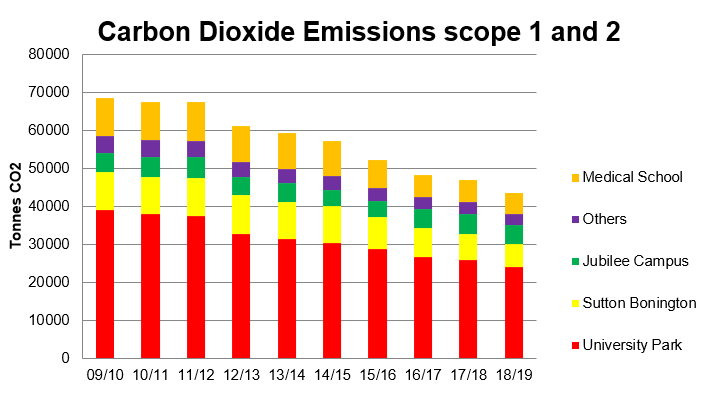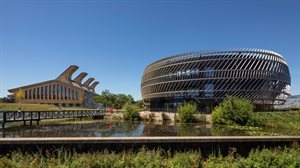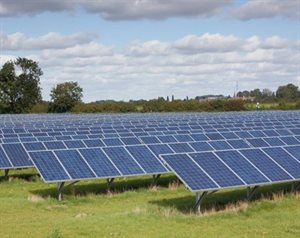The University has seen significant reductions in energy and water use throughout 2019/2020 compared to the previous year. In addition, from 2010-2020 the University has reduced its carbon emissions by 40%, from 68,000 tonnes in 2009/10 to 39,216 tonnes of CO2 in 2019/20. This is a huge achievement and exceeds the target set in 2010 by almost 2,000 tonnes.
In 2019/20 our scope 1 (mainly gas and other fuels) and scope 2 (purchased electricity) carbon dioxide emissions have reduced by 10% or 4,386 tonnes from 2018/19.
In 2019/20 compared to 2018/19
- There has been a 3% reduction in energy consumption
- There has been a significant reduction in water consumption of 22%
- Overall energy costs reduced by £1,196,081 or 9%
- Water costs decreased by £434,923 or 17%
- Electricity consumption reduced by 14% overall
- 95% of the normal gas consumption was still used

How we got here
Since 2010 we have invested over £20m in interventions and improvements to reduce our Scope 1 and 2 emissions. This has resulted in the estimated annual savings of 14,223 tonnes of CO2.

Paths to achieving energy reduction
- Improvements in energy efficiency of buildings, including insulation, heating and lighting.
- More efficient use of existing equipment e.g., fume cupboards, building and temperature controls.
- Generation of energy from small/medium scale renewable energy systems.
- Major infrastructure upgrades to replace existing plant to reduce energy cost, carbon emissions while at the same time improving system resilience.
This year’s investments have included
- Replacement boilers at Willoughby, Nightingale, Southwell and Newark Halls of Residence along with Computer Science, The Dearing Building and The Exchange Building.
- Chiller replacements at Computer Science, Dearing Building and The Exchange.
You can read more about some of the projects we’ve undertaken in the past 10 years here.
The impact of Covid-19
The Covid-19 pandemic and national lockdown measures have unsurprisingly accelerated these reductions. In March 2020 our campuses moved into a state of hibernation, with buildings closed and a displacement of energy use and carbon emissions. For example, during the main hibernation period, we saw electricity use reduce in April, May and June by 43%, 44% and 41% respectively.
Responding to the Covid-19 pandemic has illustrated that it is possible to reduce energy consumption relatively quickly and for sustained periods of inactivity. This learning will inform how we hibernate for future vacation periods.
Whilst our onsite energy related carbon emissions have reduced as a consquence of the pandaemic, we recognise that there has been a displacement effect with an increase in domestic carbon emissions as large numbers of our students and staff worked and studied remotely. The challenge for us as we move through into full recovery is to lock in some of the sustainable beahviours that we have seen and continue to reduce the direct and indirect carbon emissions of the Universities activities.
The challenge ahead
We are now developing new ambitious carbon reduction targets for the University. To do this we are using a science-based approach. This approach, based on the science of climate change, calculates the level of carbon reduction needed to do our ‘fair share’ in reducing global emissions and contribute to meeting the Paris agreement.
Over the last decade we have benefitted from the rapid decarbonisation of electricity delivered from the National Grid and this is projected to continue as more zero carbon installations come on line. The major challenge for us now is to decarbonise how we heat our buildings. We will be adopting a ‘fabric first’ approach where we will reduce demand through improving the energy efficiency of buildings (walls, ceilings, windows) and also applying low/zero carbon renewable energy technologies.
Specific energy reduction interventions for existing buildings will be needed to support the transition to a net zero carbon campus. In addition, a design guide for all new builds and major refurbishments is under development as part of the wider University sustainability framework. This guide will include minimum energy and water performance targets and integration of renewable energy provision.

Professor John Atherton, Pro Vice Chancellor and Chair of the University Sustainability Committee said:
“The University has made fantastic progress in reducing our carbon emissions over the past 10 years. But we are not stopping there. We are now setting new and even more ambitious ‘Science Based Targets’ which ensure we play our part in keeping global warming below 1.5 degrees. We are also making environmental sustainability an integral part of our education and research. Let’s all – students and staff – work together for a sustainable future.”
Posted on Wednesday 9th December 2020